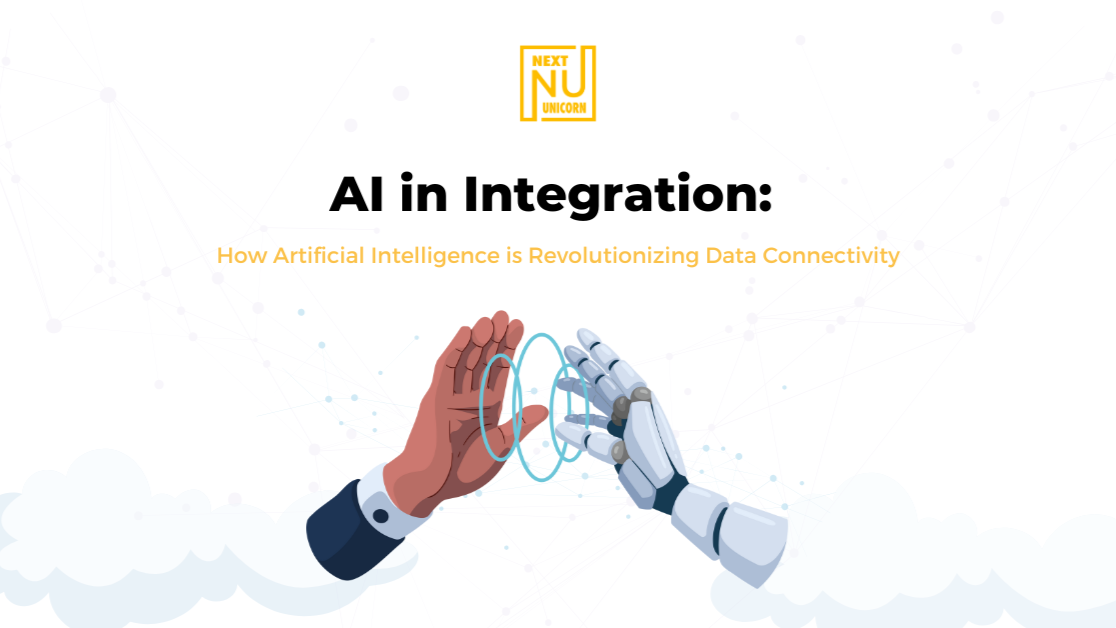AI in Integration: How Artificial Intelligence is Revolutionizing Data Connectivity





In the age of rapid digital transformation, organizations are managing vast volumes of data that demand seamless connectivity and accessibility across platforms. While traditional integration approaches have served businesses for years, the integration landscape is evolving with the introduction of Artificial Intelligence (AI). “AI in integration” has become a pivotal force, transforming the ways businesses connect, manage, and utilize data. By incorporating “machine learning,” “AI-powered integration,” and “data-driven automation,” companies can now optimize data flow, improve efficiency, and unlock intelligent workflows that elevate decision-making and performance.
The Importance of Integration in the Modern Data Landscape
With the digital world generating over 2.5 quintillion bytes of data each day, integration plays an essential role in data accessibility and usability. Integration ensures that data flows securely between applications, databases, and users, creating a cohesive and efficient ecosystem. However, traditional integration solutions, while reliable, are limited in adaptability and speed, which is where AI-powered integration steps in.
- Benefits of Data Integration: Enhanced collaboration, improved data accuracy, and reduced redundancy.
- Challenges in Traditional Integration: High maintenance, limited scalability, and the need for manual intervention.
How AI is Transforming Data Connectivity?
Artificial Intelligence brings a new level of automation and intelligence to data connectivity. Through machine learning, AI in integration can analyze large datasets, predict integration needs, and create responsive workflows that evolve with changing data patterns.
Automated Data Mapping and Transformation
One of the most significant advantages of AI-powered integration is automated data mapping. This process, traditionally time-consuming and complex, is now faster and more accurate. AI uses machine learning to recognize and match data fields across systems automatically, reducing errors and increasing the speed of integration setup.
Enhanced Data Quality and Validation
Data integrity is critical in integration. AI in integration uses data-driven automation to continuously validate and cleanse data, identifying anomalies or inconsistencies in real-time. With these intelligent workflows, businesses maintain high-quality data, supporting analytics, compliance, and decision-making.
- Use case example: AI algorithms can detect duplicate records in CRM and ERP systems, ensuring a single source of truth for customer information.
The Role of Machine Learning in Intelligent Workflows
Machine learning, a core component of AI-powered integration, enables systems to learn from historical data and improve over time. It can detect patterns, predict integration requirements, and recommend adjustments, creating highly adaptive and “intelligent workflows.”
- Predictive Analysis: Machine learning can analyze data trends and predict changes in integration needs, proactively suggesting adjustments.
- Workflow Optimization: By understanding how data is used across different systems, machine learning optimizes workflows, routing data efficiently and reducing unnecessary processing.
AI-Driven Security in Data Integration
Security remains a top priority in data connectivity. AI in integration offers enhanced security capabilities by detecting unusual patterns and potential threats in real time. AI-driven security models are proactive, identifying vulnerabilities, and automating responses to protect sensitive data.
- Real-time Monitoring: AI algorithms track data movement and access points, alerting administrators to any unauthorized access.
- Automated Compliance Checks: AI-powered integration ensures that data remains compliant with industry standards by continuously monitoring compliance requirements.
Examples of AI-Powered Integration Solutions
AI-powered integration solutions are already transforming industries. Here are a few examples:
- Healthcare: AI-driven integration connects patient records across platforms, providing a unified view that enhances diagnostics and patient care.
- Finance: Financial institutions use AI-powered integration to unify data from banking systems, enabling real-time fraud detection and customer personalization.
- Retail: Retailers leverage machine learning to integrate customer data across marketing, sales, and customer service, optimizing customer experience and inventory management.
The Future of AI in Integration
As AI technology continues to advance, the future of AI in integration looks promising. With developments in natural language processing, AI-driven integration could soon understand and execute complex integration requests with little to no human input. Additionally, the increased focus on intelligent workflows means that integration solutions will become even more autonomous and adaptive, reshaping the way businesses manage data connectivity.
- Intelligent Recommendations: Future AI in integration systems will analyze industry-specific data to suggest best practices and improvements tailored to each business.
- Increased Automation in Data-Driven Automation: As automation becomes more data-driven, integration workflows will not only become faster but also more accurate, effectively reducing the need for human oversight.
Conclusion
AI in integration is more than just a trend; it is a fundamental shift in how businesses connect and utilize data. By enabling machine learning, intelligent workflows, and data-driven automation, AI-powered integration transforms data connectivity into a streamlined, secure, and adaptive process that keeps pace with business demands. As organizations embrace these advancements, they gain a competitive edge, empowered by real-time insights, enhanced efficiency, and predictive capabilities that drive better business outcomes. AI-powered integration is the future, and its impact on data connectivity has only just begun.

